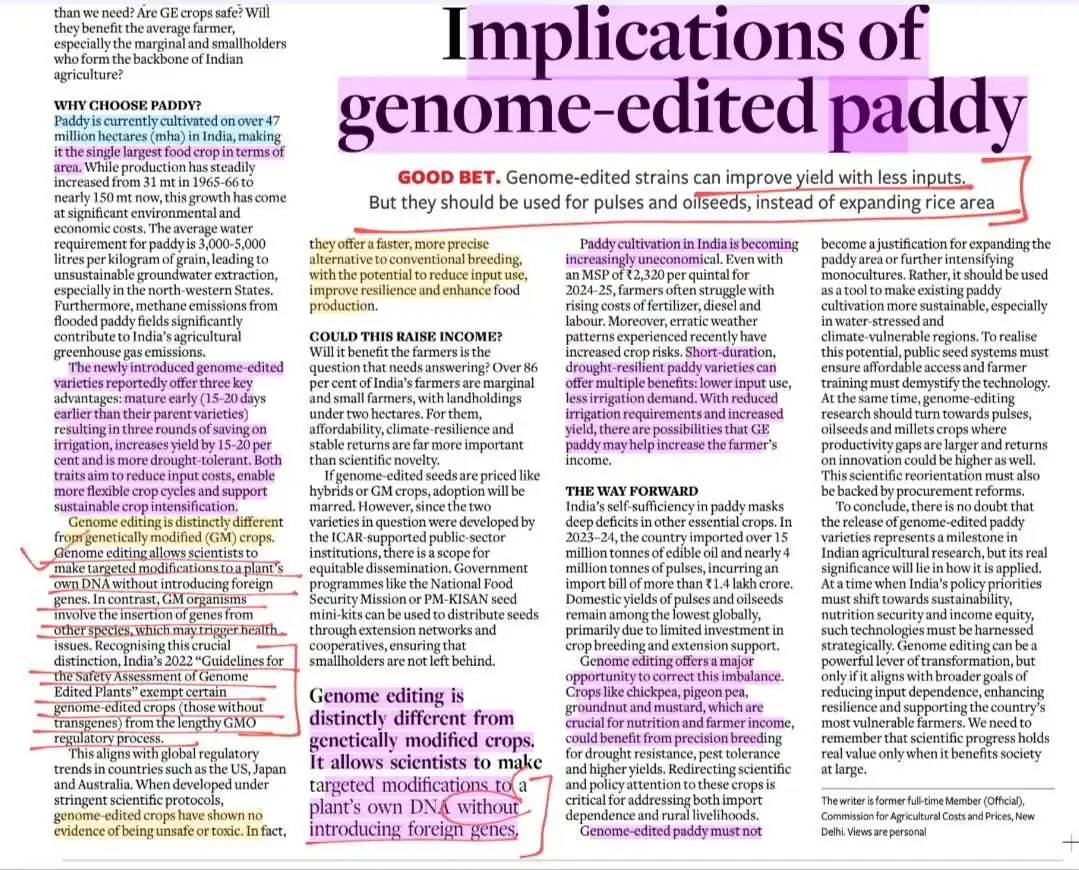
UPSC Science Technology UPSC UPSC UPSC UPSC Upsc Upsc Upsc Upsc UPSC BPSC MPPSC UPPSC CAPF CDS NDA™
May 29, 2025 at 01:35 PM
🔆Genome-Edited Paddy and Its Implications
✅ Paddy Cultivation in India:
• Paddy is grown on over 47 million hectares, making it India’s largest food crop by area.
• Traditional paddy requires high water (3,000–5,000 litres per kg), causing environmental stress.
✅ Genome Editing vs GM Crops:
• Genome editing allows precise changes to a plant’s own DNA without introducing foreign genes.
• This is different from genetically modified (GM) crops, which insert genes from other species and face stricter regulations.
• India’s 2022 guidelines exempt genome-edited crops without transgenes from lengthy GMO regulations.
✅ Advantages of Genome-Edited Paddy:
• Matures earlier (15–20 days), saves water, and is more drought-tolerant.
• Reduces input costs and supports sustainable intensification.
✅ Economic and Environmental Challenges:
• Paddy cultivation is increasingly costly and less sustainable.
• Erratic weather and rising input costs strain farmers.
• Short-duration, drought-resilient varieties can help reduce water and fertilizer use.
✅ Recommendations:
• Genome-edited strains can improve yield with fewer inputs but should be focused on pulses and oilseeds, not expanding rice-growing areas.
• This shift supports sustainability, especially in water-stressed and climate-vulnerable regions.
• Public seed systems and farmer training are essential for adoption.
✅ Conclusion:
• Genome editing is a powerful tool for agricultural transformation but must align with goals like reducing import dependence and supporting vulnerable farmers.
• Its benefits depend on strategic use and scientific progress combined with policy support.

❤️
❤
👍
😢
🙏
7